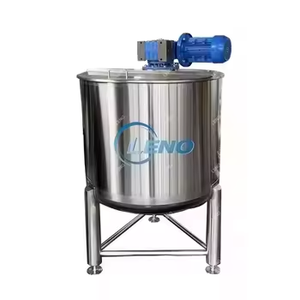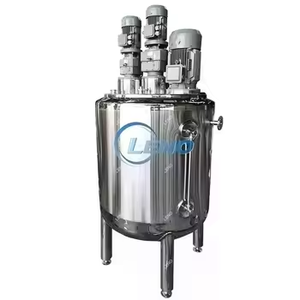
All categories
Featured selections
Trade Assurance
Buyer Central
Help Center
Get the app
Become a supplier

(3491 products available)

























The electrical heating ISO tank, also called the electric heating intermodal tank container, is a special electric heating device system installed in the chemical tank container that is compatible with standard intermodal containers. The electrical heating iso tanks can be fully functional and integrated with available electricity in any part of the world to supply heating for cargoes in transit or storage facilities.
Electrical heating ISO tanks generally come in two major types:
Fixed Conical Heating Elements ISO Tanks
The dismountable tank heater consists of a fixed heating ISO tank and a detachable heating element container. When not in use, the service provider can remove the heating element container, making it more convenient for storage and transportation. The detachable heating element container allows for easier maintenance and repair. If the heating element breaks or fails, the service provider can replace or repair it without requiring overall repairs to the tank heater. This design feature contributes to a longer lifespan for the heater.
Fixed Disc Heating Elements ISO Tanks
ISO tank containers with disc heating elements are equipped with fixed disc heating elements. These fixed discs serve as the heating source for the entire container, ensuring that the contents inside are heated evenly from all directions. Additionally, many ISO tanks currently include thermal insulation to preserve heat effectively. As a result, even if the surrounding temperature is low, the ISO tank can maintain a high temperature inside, thereby achieving a better heating effect.
Besides the above, many configurations can be amended according to customers' demands, such as a cleaning system, customized valves, and stainless steel customized materials.
The electrical heating iso tank is a specialized type of intermodal container. It employs electric heating to keep goods in a desirable state during transportation or storage.
Food & Beverage Industry
Electrical ISO tanks are widely used in the food and beverage industry. For instance, they are used to transport liquids like wine, syrup, juice, milk, and edible oil that should be maintained at a constant temperature. Specific foods, temperature, and humidity are essential to prevent the growth of bacteria. Therefore, electric ISO tanks are a suitable transportation solution for this industry. They can ensure that food and beverages arrive fresh and wholesome.
Pharmaceutical Industry
In the pharmaceutical industry, electric heating ISO tanks play a crucial role in transporting temperature-sensitive medications. These could be liquid drugs, chemical compounds, or even vaccines. For instance, vaccines need to be preserved within a specific temperature range to safeguard their efficacy. Not just for pharmaceuticals, but chemicals like pesticides and fertilizers must be transported in a way that maintains their quality. Electric heating ISO tanks can offer the consistent temperature control that is required for these industries.
Petroleum and Chemical Industry
Electric heating ISO tanks are used to transport petroleum products like diesel, gasoline, and kerosene, as well as various chemicals. They guarantee that the transportation procedure keeps the stability and purity of the products. Moreover, electric heating ISO tanks can assist in preventing issues like low temperatures that might arise during winter seasons.
Logistics and Transportation Industry
Many logistics and freight service providers employ electric heating ISO tanks. They utilize these tanks to meet the different temperature and humidity needs of their customers. Be it the food industry or the chemical industry. The electric heating ISO tank ensures a safe and efficient transportation solution.
When buying an electric heating ISO tank, the following factors should be considered to make the purchasing process easier.
Specification and capacity
Capacity and specification of an electrical heating ISO tank refers to the size and amount of cargo that can be held in the tank. By looking at the needs of the business and the kinds of products that will be transported, buyers can determine which capacity and specification will suit their situation.
Quality and safety features
The quality of an ISO tank and its safety features are important for the safe and smooth operation of the cargo supply chain. When purchasing, buyers should choose tanks that have good quality construction materials and safety features like leak-proof design, pressure control system and monitoring devices. This will ensure the durability and safety of the tank during use.
Heating system compatibility
Electrical heating ISO tanks are equipped with different types of heating systems, such as electric heating pillows or heating tapes. Buyers should ensure that the tank's heating system is compatible with their products and transportation methods to ensure efficient heating during use.
Customizable options
Some buyers may need to customize specific features or configurations for their business, such as special insulation materials or additional equipment. When purchasing, buyers should choose a supplier that can meet their customization needs to ensure that the tank will fully meet their business requirements.
Supplier selection
When purchasing an electric heating ISO tank, the choice of supplier is very important. Buyers should choose a reputable supplier that has good after-sales service and support. To ensure that any problems that arise during use can be resolved quickly and effectively. In addition, buyers can refer to suppliers' customer reviews andケース studyto better understand suppliers'
Q1: What is the difference between an electrical iso tank and a regular iso tank?
A1: The primary difference between an electrical iso tank and a regular iso tank is the presence of electrical heating elements that provide temperature control through electrical power irrespective of the location or the kind of cargo being transported.
Q2: Are electrical heating iso tanks environmentally friendly?
A2: Electrical heating iso tanks are more environmentally friendly than traditional heating methods because they often use electricity from renewable sources instead of fossil fuels.
Q3: Can electrical heating iso tanks be insulated?
A3: Yes, electrical heating iso tanks are often insulated to minimize heat loss, which ensures that the power is used efficiently and maintains the temperature of the cargo consistently.
Q4: What safety features do electrical heating iso tanks have?
A4: Electrical heating iso tanks are equipped with various safety features like over-temperature cut-offs, grounding connections, and circuit breakers to ensure safe operations and prevent accidents.